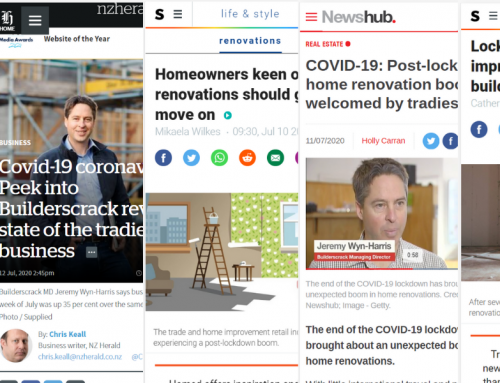
We all know the drill.
Do the job, invoice the client, get paid. Right?
Or so the story goes.
The fact is, according to recent research from Xero, half of invoices are paid late. In addition, the “Late Payments Study”, commissioned by PayPal and Intuit, showed that the average amount owed to a small business in Australia at any one time is $13,200. As your business grows, both amount owed and bad debt grow too.
So how can you buck the trend, and avoid pending and late payments turning into cash flow issues?
Xero has published several insights taken from their data. We’ve combined with our own observations to produce this list of practices that can help both ensure payment is made, and made quickly.
Tighten up due date.
Traditionally, the 30-day invoice was pretty standard – but that’s changing (and rightly so). With internet banking, electronic invoicing and easier to access loans, there is no reason for a client to small business payment term to be longer than 7 days.
By reducing your payment terms you can halve the time it takes to be paid.

(thanks xero.com)
Consider penalty terms.
More and more businesses are adding penalty interest terms to their invoices. We’ve yet to see any data studying the outcome, but it’s an interesting development and worth considering if you feel it will work for your business.
Our feeling on this is penalty terms should be more of an incentive than a hard and fast policy. The risk is that you do more damage than you solve if these are enforced too strictly. But for the invoice that ends up in dispute, it can allow you to recover some costs.
Discuss payment terms up front.
We’re a pretty low-key bunch. It can feel a little pushy or uncomfortable to talk about payment terms up front. Don’t get me wrong, it takes a bit of practice and tact, but when you nail it – your client will appreciate it and your business cash flow will benefit.
Here’s why.
When it comes to payment terms, people like to know where they stand as early as possible. If your client is expecting a 30-day payment term and you then invoice with 7 days to pay, the mismatch can create tension in the recipient if they aren’t prepared.
Discussing terms of payment creates confidence within the client, in your professional approach to business. You are showing confidence in your work when you’re confident to discuss payment. It can feel a bit counter-intuitive, but it’s something worth practising.
For most small and moderate-sized trade jobs, the client should have the cash or credit on hand – or the loan already approved. Keep an eye on the way they respond when you share terms of payment. Don’t be afraid to broach the topic of how they’ll be paying if you’re uncomfortable with their response.
Discuss line items before invoicing.
Some clients love to pick the eyes out of invoices, if you let them! So don’t give them the opportunity.
What is the client’s expectation in terms of line items? Do they expect each part or material listed separately? Or are they happy with the total on one line? It’ll depend a lot on the nature of the work, and the terms of engagement (fixed price or hourly).
While we’re discussing terms of engagement, how much detail are they expecting when it comes to the actual labour component? Some clients are happy with a simple summary, some want to see your time broken down task-by-task.
We suggest stating how you prefer to record line items up front to the client as part of the initial scope. Finding agreement at this stage can save a lot of frustrating to and fro down the track when the client is questioning the invoice.
Check in with client before issuing invoice.
“I’m going to shoot the invoice through, so just checking everything’s good with the work?”
It takes just a quick phone call or conversation after the job’s done. We all know the type that are never happy no matter how well the job is completed. Taking pride in the job you’ve done when you ring or chat can offset, even challenge, that behaviour before it rears its head.
“The job went really well, no issues.”
You want to check in to make sure nothing has been missed, and the client is ready to receive your invoice. If there is an issue, it gives you the opportunity to resolve it, without the client using the invoice as leverage (a worst case scenario!).
Send the invoice when you say you will (as soon as possible).
The client is now in your debt. You know they’re happy (you asked), and you know they’re ready to pay. Don’t delay! By issuing your invoice soon after completing the job, you initiate the terms of payment quicker and ride on the client’s satisfaction and subsequent willingness to complete the transaction.
Have a think about how you can “warm up” the invoicing stage. Adding a personalised note to your invoice is a nice touch. If you’re sending out by post, why not include a few lollies or a mini-chocolate. This kind of service leaves a positive impression and gives you a strong point of difference – leading to great reviews and referral business.
Follow up.
When you’ve received payment, a lot of trade businesses consider the transaction done and dusted. To continue to build a point of difference, touching base with the client to let them know you’ve received their payment can add some assurance to the client that the transaction is completed – and gives an opportunity to reinforce your professionalism.
Remind clients. And again!
There are a few ways to follow up on unpaid invoices, beginning softly and ramping up pressure over time.
A great starting point is on the eve of the invoice going overdue, drop them an email or message through Builderscrack letting them know. “Hey Bob, just a friendly reminder that invoice ### for your deck is due tomorrow. Hope you’re enjoying it and looking forward to receiving payment.”.
The day the invoice is overdue, let them know. “Hey Bob, did you realise your invoice ### is now overdue? I’d appreciate it if you could please pay immediately.”
After a few more days it’s time to give the client a call to check in and see what the deal is. Keep it friendly, but firm.
From this point on: for example, one week overdue on a 7-day invoice, it is time to question their ability to pay. It’s generally unlikely that this is the case, but it sends a strong message that you’re not satisfied with the time taken. Keep a friendly tone in your email, but be firm that the payment is now overdue.
Still No Payment?
Once the invoice is overdue 2-3 times past the original due date, it’s time to question the recipient’s intention to pay – and potentially enlist outside help.
When it comes to invoices that remain unpaid, it’s imperative to act quickly and decisively. It should go without saying that your lawyer is the person to work with to develop a debtor strategy. Once it’s enacted, it needs to be swift and as effective as the law allows.
It’s important to maintain confidence in yourself and your work – it’s possible that unscrupulous clients will throw these into question in an attempt to deflect responsibility. Hold your line, and talk it through with friends and family.
Failing this, writing off bad debt is your accountant’s role and is almost certainly tax deductible.
In conclusion.
Invoicing is at the core of our business transactions, but there are many aspects which require careful balancing. How you invoice is tightly wrapped up in how your client views your business, brand and work.
For these reasons, experimenting and developing the right invoicing strategy for your business is key to getting paid quickly and reliably, and all the while giving your clients a great experience.
Bottom line is, don’t avoid looking at how you invoice because it’s difficult or uncomfortable – it’s one of the most vital components in how you do business.





